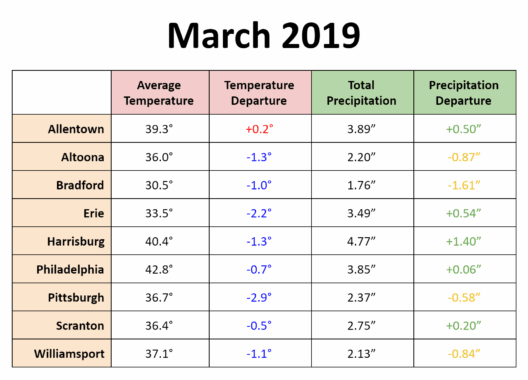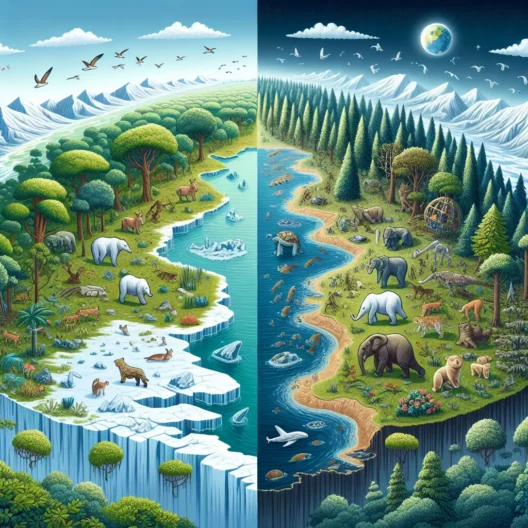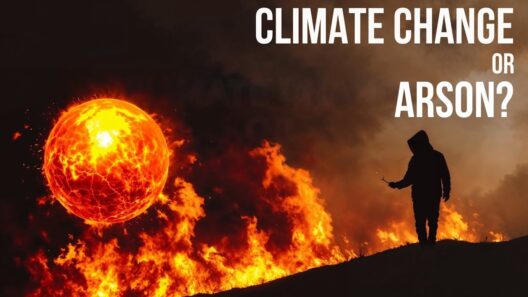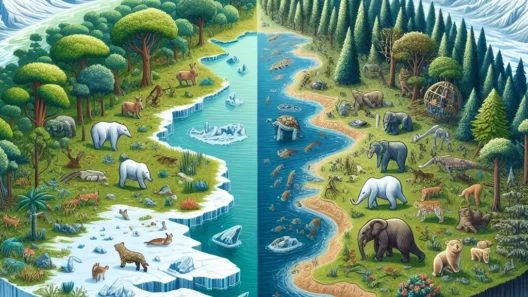Global warming, a phenomenon characterized by the progressive increase in Earth’s average temperature due to anthropogenic activities, has far-reaching implications on the planet’s climate and atmospheric conditions. One area of concern is the relationship between global warming and its impact on cloudiness and weather patterns. Understanding this relationship not only sheds light on the current environmental crisis but also prompts profound questions about future climate scenarios.
Clouds play a pivotal role in the Earth’s climate system. They reflect sunlight, regulate temperature, and influence precipitation patterns. The intricacies of cloud formation and their interactions with various atmospheric components are continuously evolving under the pressures of climate change. As temperatures rise, we must ponder: do warmer conditions lead to more cloudiness? The answer isn’t straightforward, as the relationship between temperature and cloud formation is convoluted.
Increased atmospheric temperatures contribute to higher evaporation rates from oceans and other bodies of water, leading to greater humidity. This amplified humidity can, in theory, generate more clouds. However, the types of clouds that form and their resultant effects on weather can vary significantly. For example, low-lying stratus clouds trap heat, reinforcing warming, while high-altitude cirrus clouds can reflect sunlight back into space, potentially mitigating some warming effects.
The interplay between global warming and cloud formation involves critical feedback loops. As temperatures rise, it could lead to the expansion of the atmosphere and alter the dynamism of weather systems. Warmer air can hold more water vapor, which leads to intense storm systems. Consequently, the prevalence of extreme weather events may proliferate, wreaking havoc on local ecosystems and human infrastructure alike. The implications extend further, as alterations in precipitation patterns affect agricultural practices globally.
Consider the phenomenon of atmospheric rivers, narrow corridors of concentrated moisture in the atmosphere. Global warming intensifies these systems, resulting in increased rainfall and, at times, devastating floods. While the frequency of such occurrences may increase, there remains a degree of unpredictability regarding when and where these climate anomalies will manifest. The complexity of global weather patterns means that certain regions may experience drought while others are inundated with excess rain. This variance complicates water resource management and threatens food security.
Moreover, shifts in cloudiness can also influence temperature regulations. As warm temperatures affect cloud cover, the potential for increased rooftop gardens and urban greening initiatives emerges as a viable strategy to mitigate urban heat island effects. By promoting healthy ecosystems within urban environments, cities can leverage vegetation to absorb CO2 and regulate local temperatures. The relationship between cloudiness and urban development highlights an often-overlooked avenue for addressing climate change in a practical, impactful manner.
Furthermore, researchers are investigating the role of aerosols—tiny particles suspended in the atmosphere. These substances can have dual effects: some may encourage cloud formation, while others can inhibit it. For instance, sulfate aerosols from industrial pollution serve as cloud condensation nuclei, which enhances the cloud cover. Despite these benefits, the harmful health impacts of aerosols cannot be ignored. Thus, the long-term implications of this trade-off must be evaluated within the broader context of sustainable development.
The fluctuation in weather patterns owing to global warming is not limited to extreme events. Seasonal shifts are becoming increasingly pronounced. For example, spring is arriving earlier in numerous regions, modifying the cycle of plant and animal life. Such adjustments echo through ecosystems, impacting food webs and biodiversity. Animals that rely on specific timing for breeding or foraging may find their life cycles mismatched with the changing climate dynamics, leading to potential declines in populations.
In addition to ecological ramifications, socio-economic consequences are to be considered. As weather patterns become more erratic, certain industries—such as agriculture, tourism, and fisheries—will face unprecedented challenges. Farmers may encounter difficult choices regarding crop yields, pest control, and water conservation. Coastal businesses reliant on predictable weather patterns will need to adapt or face adverse economic repercussions. In effect, these changes will drive migration patterns, as communities seek more stable climates, leading to complex socio-political tensions.
It is imperative that societies take heed of these transformative dynamics. Investment in green technologies and sustainable initiatives can cushion the impact of these shifts. Transitioning to renewable energy sources, enacting policies that favor conservation, and promoting community-level resilience plans are essential strategies to mitigate the threats posed by global warming.
Across the globe, researchers continue to peel back the layers of complexity surrounding climate systems. Models and simulations evolve, enhancing our understanding of how cloudiness and weather patterns interact in an increasingly warm climate. Consequently, ongoing research must prioritize the development of climate adaptation strategies that will work harmoniously with the planet’s changing dynamics.
In conclusion, the nexus between global warming, cloudiness, and weather patterns offers a chasm of inquiry yet to be fully explored. Increasing cloudiness, fluctuating precipitation, and shifting seasons represent facets of a broader narrative about our rapidly changing world. By cultivating awareness and advocating for informed policy decisions, we can embrace the imperative of sustainability, ensuring a more resilient planet for future generations.








